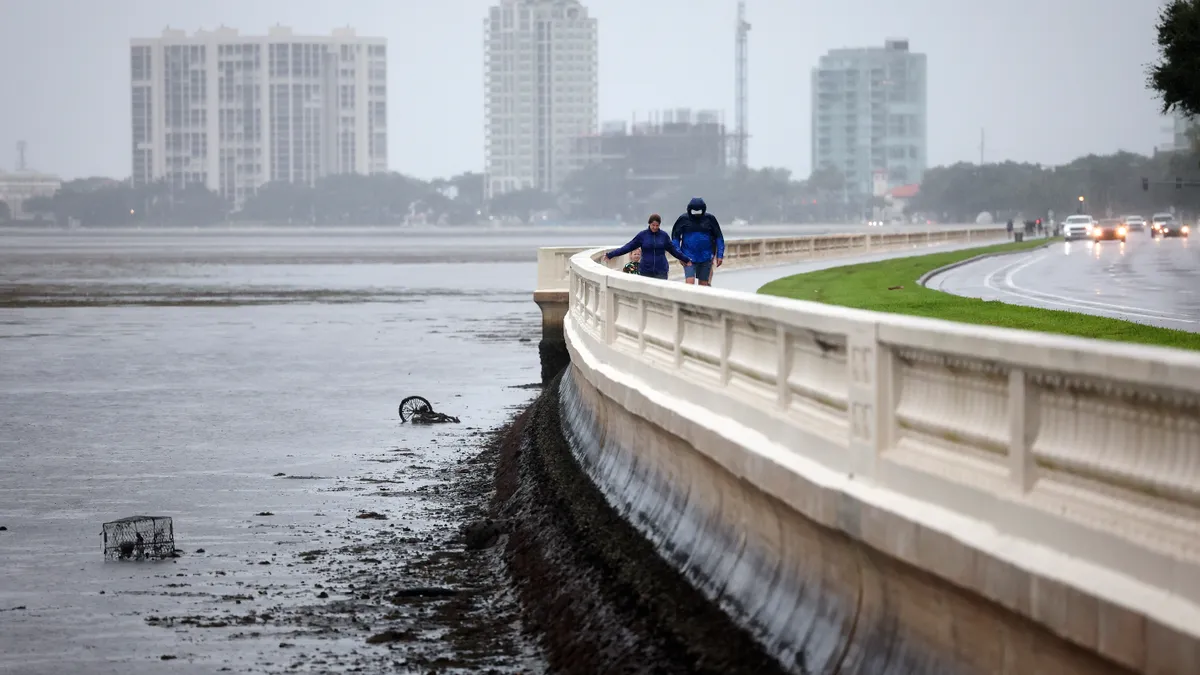Dive Brief:
- Out of all the commercial real estate sectors, apartments have the most exposure to Hurricane Ian as it makes landfall along Florida’s Gulf Coast and moves along an expected path that could go through Georgia, South Carolina, North Carolina and Virginia, according to a new report shared with Multifamily Dive from data and research firm MSCI.
- Overall, $603 billion worth of apartments are in Ian’s five-day path forecast by the National Hurricane Center. Of that, $10 billion of apartment properties may face the storm surge, which is the abnormal rise of water generated by a storm above the predicted astronomical tides.
- An estimated $1.5 trillion worth of commercial real estate buildings are also in Ian’s five-day path. MSCI only includes institutional-level assets priced at $2.5 million or greater. Other properties below that threshold also face risks.
Dive Insight:
MSCI provides only one estimate of the real estate in Ian’s path. CoreLogic estimates that more than 1 million single-family and multifamily homes along the Florida Gulf Coast are at risk from the hurricane’s storm surge. Those homes have a reconstruction cost value of approximately $258.3 billion.
“Hurricane Ian has all the ingredients you need for a bad storm surge event,” Tom Jeffery, senior hazard scientist at CoreLogic, said in a report. “Due to Hurricane Ian’s slower speed and rapid intensification in the eastern Gulf of Mexico, the threat of a widening wind field bringing damaging storm surge increases each day.”
Homes and apartments in areas like Tampa, St. Petersburg, Coral Gables and Ft. Myers will likely face the brunt of the storm damage, according to CoreLogic.
“Many homes along Florida’s western coast are at risk of storm surge inundation regardless of where the storm makes landfall, and even more homeowners will contend with heavy rainfall and hurricane-force winds throughout midweek,” Jeffery said.
Getting ready
For apartment owners and managers facing severe weather events, the Texas Apartment Association has put out a checklist that includes gathering key corporate, vendor and emergency contacts, labeling and gathering supplies and making plans to communicate with residents.
Many apartment firms with properties in hurricane-prone areas activated their plans well before Ian hit.
“We have five properties in harm's way,” said Steve Hallsey, executive vice president of operations for Atlanta-based Wood Residential Service. “We have a complete protocol concerning storms that is managed by our emergency management team. We have a massive checklist that properties go through prior to a storm.”
Unfortunately, apartment owners and operators may be dealing with more frequent hurricane risks in the coming years.
“While it is impossible to attribute individual events to climate change, events like this storm are predicted to become more frequent and more intense, meaning that real estate investors face risks that must be mitigated,” according to MSCI.
Click here to sign up to receive multifamily and apartment news like this article in your inbox every weekday











